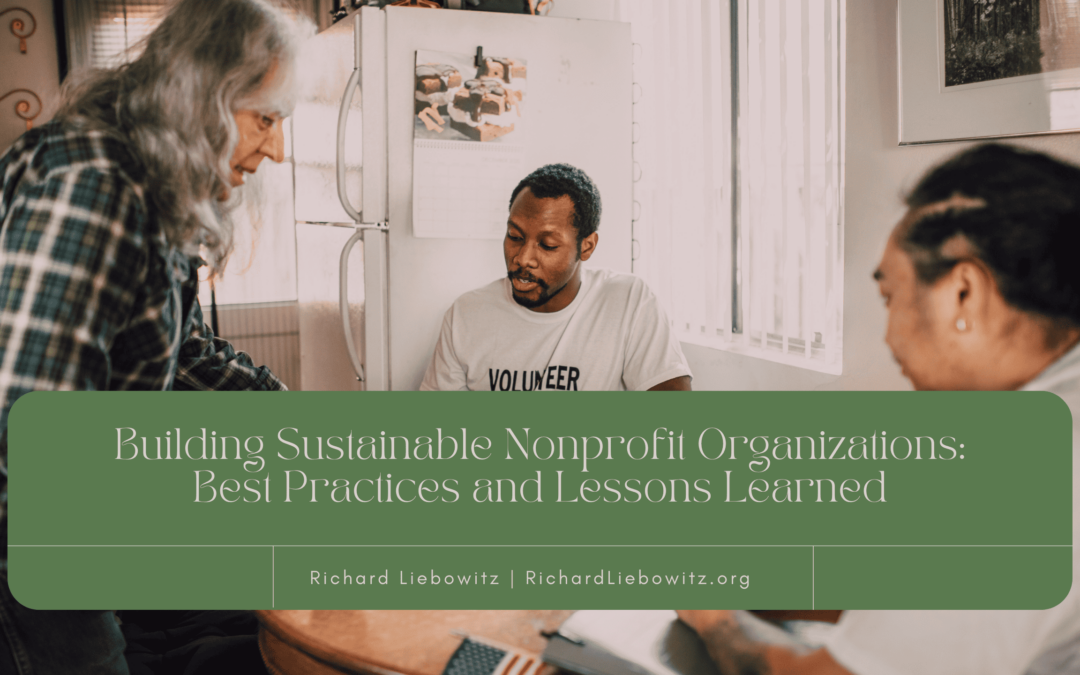Nonprofit organizations are pivotal in addressing societal issues, from environmental conservation to social justice. To ensure their long-term impact, these organizations must focus on building sustainability. Sustainable nonprofit organizations can weather challenges, attract support, and continue their mission effectively.
1. Define a Clear Mission and Vision:
The foundation of any nonprofit organization is its mission and vision. These statements guide the organization’s activities and serve as a source of inspiration for both volunteers and donors. A well-defined mission and vision help maintain focus and relevance over time.
For instance, the World Wildlife Fund (WWF) has successfully championed environmental conservation by adhering to its mission: “to build a future in which people live in harmony with nature.” WWF’s unwavering commitment to this vision has made it a globally recognized and sustainable nonprofit.
2. Strategic Planning:
Effective strategic planning is crucial for nonprofit sustainability. Organizations must set clear goals and develop actionable plans to achieve them. Regularly revisiting and adjusting the strategic plan ensures adaptability and relevance in a dynamic world.
One example of strategic planning in action is Teach for America. This organization has thrived by setting specific objectives to close the educational achievement gap in the United States and developing a well-structured plan to achieve these goals.
3. Diversify Funding Sources:
Being reliant on a single funding source can be risky. Sustainable nonprofit organizations diversify their funding sources, which may include grants, individual donations, corporate partnerships, and fundraising events. This approach spreads financial risk and enhances long-term stability.
The American Red Cross, for instance, combines donations from individuals, corporations, and government grants to provide disaster relief and support services. This diverse funding model has sustained their mission for over a century.
4. Invest in Leadership and Talent:
Strong leadership is vital for nonprofit sustainability. Cultivating a talented, motivated team is a best practice to ensure the pursuit of the organization’s goals. Nurturing leadership and talent allows for smooth transitions and long-term success.
A lesson learned from the Bill & Melinda Gates Foundation is the importance of visionary leadership. Bill and Melinda Gates’ dedication and strategic thinking have been instrumental in addressing global health and education challenges, making their foundation one of the most impactful nonprofit organizations.
5. Transparency and Accountability:
Nonprofits must be transparent and accountable to their stakeholders, including donors, volunteers, and communities. Demonstrating how funds are used and the impact of their work fosters trust, which is vital for sustainability.
The charity: water organization excels in transparency by publicly sharing detailed financial reports, project information, and videos of the water projects they fund. This transparency has earned them trust and sustained their mission of providing clean drinking water in developing countries.
6. Collaborate and Build Partnerships:
Nonprofits can amplify their impact by collaborating with other organizations and forging partnerships. Collaborative efforts enable resource-sharing, knowledge exchange, and greater reach.
A striking example of successful collaboration is the Global Fund to Fight AIDS, Tuberculosis, and Malaria. It partners with governments, nonprofits, and the private sector to effectively pool resources and expertise to combat these global health issues.
7. Assess and Adapt:
Sustainable nonprofits continuously evaluate their performance and adapt to changing circumstances. Regular assessments help identify weaknesses and opportunities for improvement, ensuring the organization remains relevant and practical.
The Grameen Bank, founded by Muhammad Yunus, is a case in point. It started by offering microloans to impoverished women in Bangladesh and has since expanded its services to include microfinance, healthcare, and social business initiatives. This adaptability has helped Grameen Bank thrive and sustain its mission of poverty alleviation.
8. Engage and Mobilize Supporters:
Successful nonprofits engage and mobilize their supporters to be active advocates and volunteers. Building a dedicated community around the organization’s cause can create a lasting impact and ensure sustainability.
A prime example of supporter engagement is the ALS Association’s Ice Bucket Challenge, which went viral and raised millions for ALS research. This campaign increased funding and mobilized a community of supporters who continue to advocate for a cure.
Building sustainable nonprofit organizations requires a combination of clear vision, strategic planning, diversified funding, strong leadership, transparency, collaboration, adaptability, and engaged supporters. By following these best practices and learning from organizations that have thrived, nonprofit organizations can make a lasting impact on the world and continue their vital work for years to come. Sustainable nonprofits are more resilient in the face of challenges and better equipped to create positive societal change.

